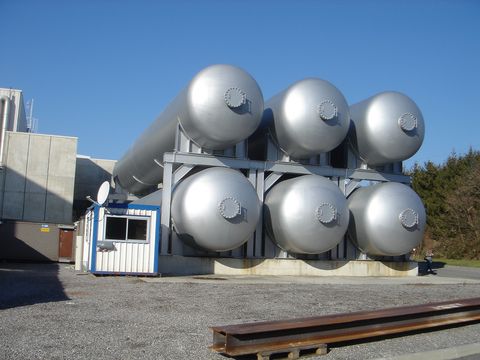Did any Helium get discovered ?

One of the most abundant elements in the universe is getting harder to come by.
Helium goes into a lot more than balloons. Because the gas is inert and has extreme melting and boiling points—both near absolute zero—scientists use it in cryogenics, high-energy accelerators, arc welding, and silicon wafer manufacturing. A severe reduction in the availability of helium could force hospitals to replace costly MRI magnets or restrict patient access to them.
The federal government, which sets helium prices, announced in April that helium prices would spike from $75.75 per thousand cubic feet (Mcf) in FY 2012 to $84 per Mcf in FY 2013. (Last year, prices rose only 75 cents.) This price spike, along with uncertain federal policy (and a peculiar industry setup to begin with), is threatening to create a shortage. Here's what's going on.
Helium Hotspot
Although helium is the second most abundant element in the universe, most of it in the Earth's atmosphere bleeds off into space. Helium used for industrial purposes is a byproduct of natural gas production, and the Texas Panhandle is the United States' helium capital. In the natural gas fields near Amarillo, the U.S. government maintains the country's largest helium storehouse. The government put it there back in 1925 because natural gas produced at the gas fields between Amarillo and Hugoton, Kan., has a very high helium concentration—up to 1.9 percent.
Although other countries produce helium, the natural gas fields elsewhere around the globe are much less helium-rich than those near Amarillo. Because helium was critical to military reconnaissance and space exploration in the mid-20th Century, Congress mandated that the government encourage private helium producers nationwide to sell their helium to the government and store it near Amarillo as part of the Federal Helium Program.
THE U.S. ALONE PRODUCES 75 PERCENT OF THE WORLD'S HELIUM
Today, the U.S. alone produces 75 percent of the world's helium. Nearly half of that total, or roughly 30 percent of the world's helium supply, comes from the U.S. Federal Helium Reserve. That reserve is held in a huge natural underground reservoir near Amarillo called the Bush Dome. The dome is connected to a pipeline that links the stored helium with nearby helium refining facilities and the natural gas fields in Kansas.
Yet the American reserve is in danger. Between 10 and 12 billion cubic feet of recoverable helium are expected to remain in the reservoir by the end of 2014, Walter Nelson, director of helium sourcing for Air Products and Chemicals, Inc., told the U.S. Senate Energy and Natural Resources Committee in May. "At current production rates of about 2 billion cubic feet per year, the reservoir could continue to produce helium for five to six more years." But, he said, the computer modeling that predicts the amount of helium the reservoir will be able to produce, considering its complex geology, has determined that the reservoir production rates "will decline to approximately 1 billion cubic feet per year after 2014," he said. "As a result, the usable life of the reservoir will be extended to 2018 or perhaps even 2020."